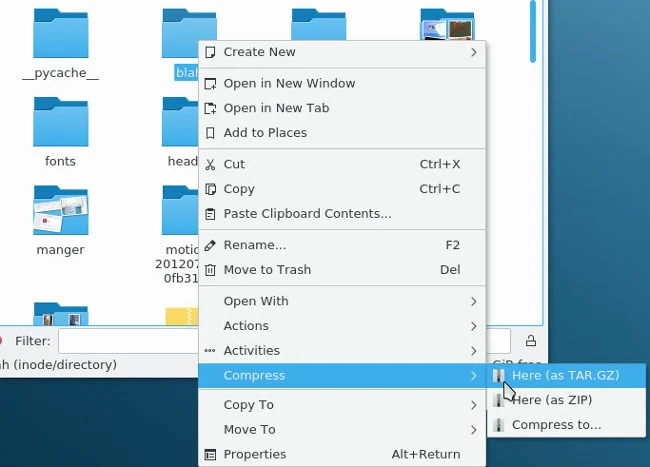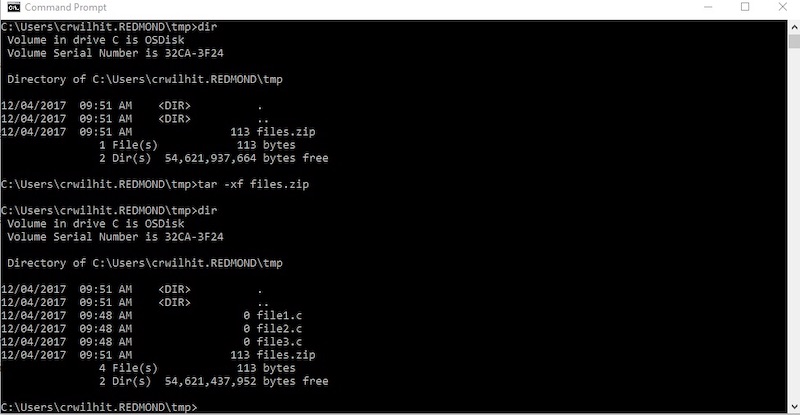

#TAR UNZIP GZ ARCHIVE#
-f : Read the archive from the archive to the specified file.display progress and extracted file list on screen. -z : Work on gzip compression automatically when reading archives.To extract resume.doc file from tarball, enter:

If your tarball name is, enter the following at a shell prompt to extract files: To extract one or more members from an archive, enter: Tar -zxvf file1 file2 dir1 dir2 Extracting tr.gz.
#TAR UNZIP GZ HOW TO#
This page shows how to extract tar.gz file using command line. The tar command is available on Linux (CentOS/RHEL/Fedora/Debian/Ubuntu and all other distros), BSD (OpenBSD/NetBSD/FreeBSD), Apple macOS, HP-UX, AIX, and other Unix-like operating systems. Despite the utility’s name, Tar can direct its output to available devices, files, or other programs (using pipes), it can even access remote devices or files as archives. The name “Tar” comes from this use it stands for tape archiver. Initially, tar archives were used to store files conveniently on magnetic tape.
#TAR UNZIP GZ UPDATE#
For example, you can use tar on previously created archives to extract files, to store additional files, or to update or list files which were already stored. The tar program provides the ability to create tar archives, as well as various other kinds of manipulation. How do I extract tar.gz file under Linux / UNIX like operating systems using command line options?Ī tarball (tar.gz file) is nothing but compressed tar archive. You've also learned how to list and get info from archived files.I have downloaded a file called from the Internets. It covered two different python packages - zipfile and tarfile. In this tutorial, we covered how to extract single or multiple files from Archive with Python. If you like to change the output directory than you can change the second parameter - '.' Conclusion In this example we are going to extract the file - 'text1.txt' in the current working directory. Basic usage is shown below: import zipfile If you like to get just a single file from Archive then you can use the method: zipObject.extract(fileName, 'temp_py'). Note: All files from the archive will be unzipped in the current working directory for the script. It uses module - tarfile and differs the two types in order to use proper extraction mode: import tarfile Step 4: Extract files from Tar/Tar.gz With Pythonįor Tar/Tar.gz files we can use the code below in order to extract the files. Zip_file.extractall(directory_to_extract_to) With zipfile.ZipFile(archive, 'r') as zip_file: Package zipfile can be used in order to extract files from zip archive for Python.

Step 3: Extract files from zip archive With Python json ones - or read the files as Pandas DataFrames you can do: from zipfile import ZipFileĭfs = If you like to filter them - for example only. ['pandas-dataframe-background-color-based-condition-value-python.png',

Next we can list all files from the archive in a list by: from zipfile import ZipFile Step 2: List and Read all files from Archive with Python
#TAR UNZIP GZ ZIP FILE#
If you are interested in parallel extraction from archive than you can check: Python Parallel Processing Multiple Zipped JSON Files Into Pandas DataFrame Step 1: Get info from Zip Or Tar.gz Archive with Pythonįirst we can check what is the content of the zip file by this code snippet: from zipfile import ZipFileįrom which we can find two filenames and size: We will describe the extraction of single or multiple files from the archive. In this article, we'll see how to read/unzip file(s) from zip or tar.gz with Python.


 0 kommentar(er)
0 kommentar(er)
